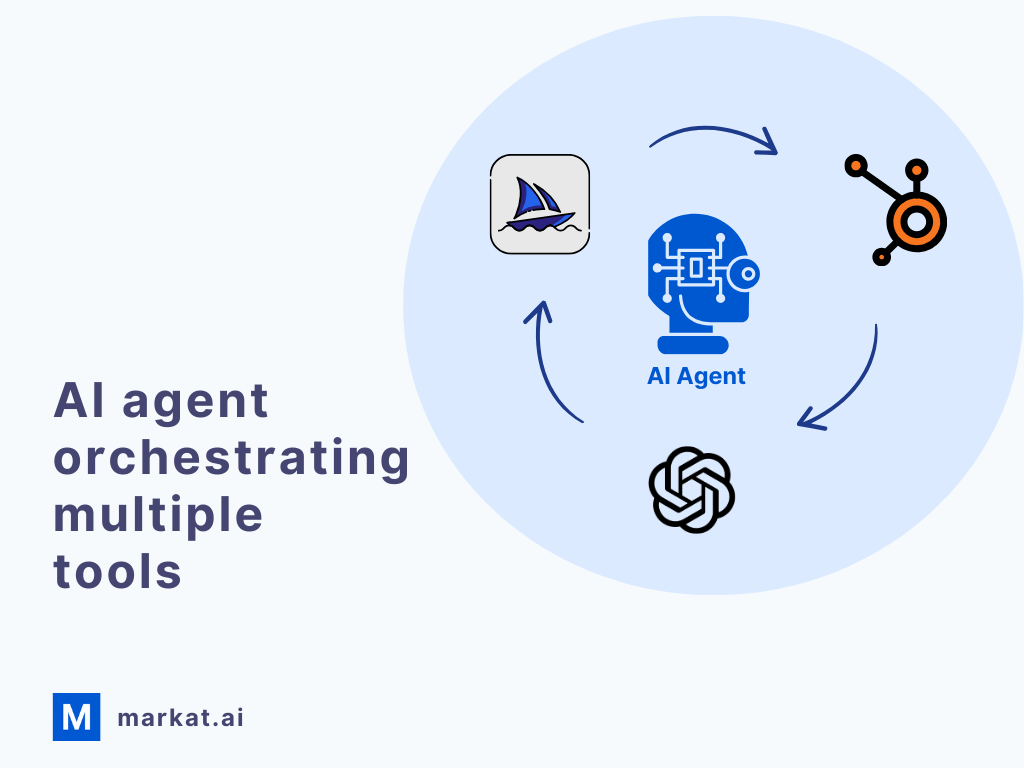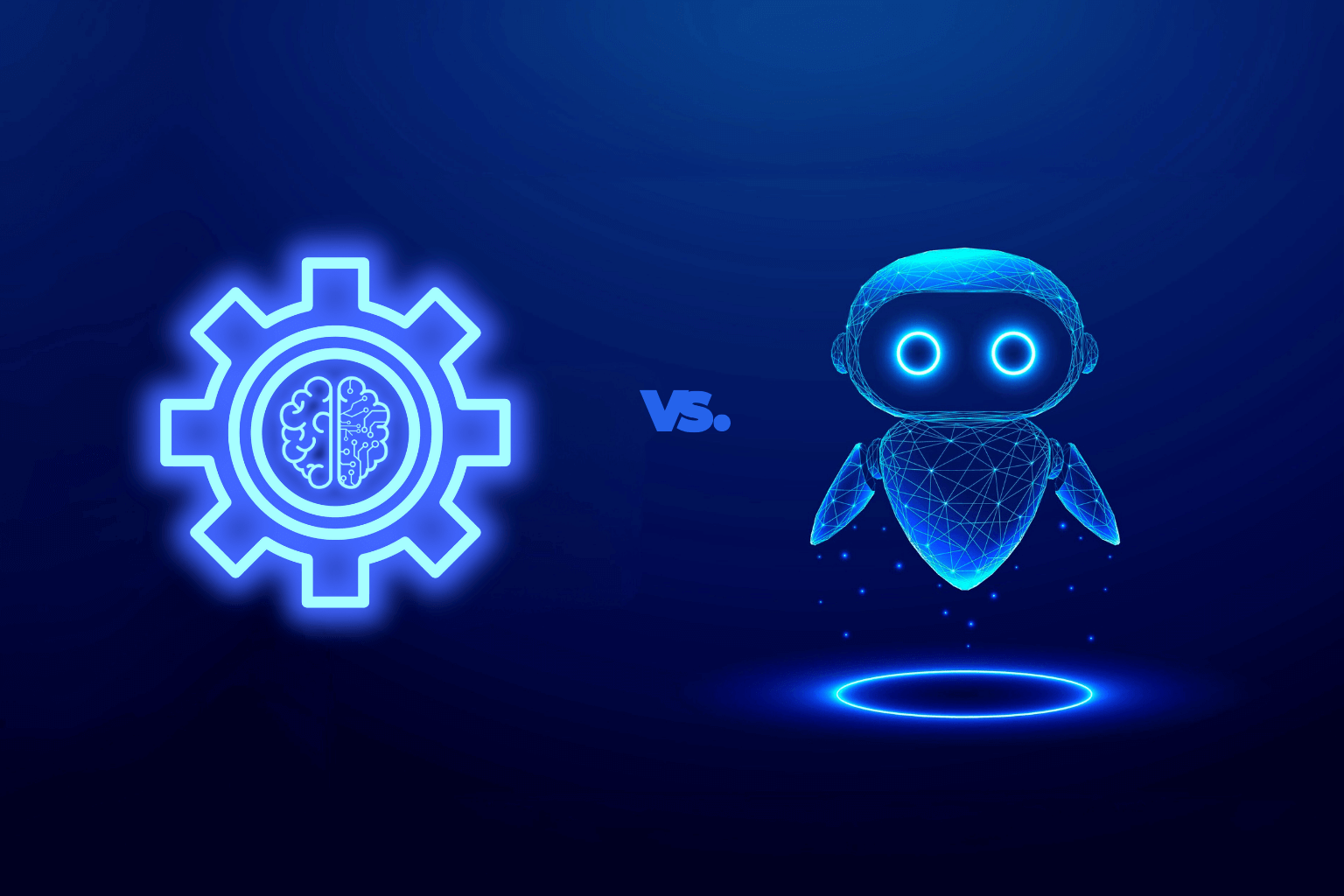Introduction
One of the most common questions right now is simple: are AI agents and AI tools the same? The short answer: no. The terms are often thrown around interchangeably, but they mean very different things, and confusing them can cost businesses time, money, and credibility.
In this article, we’ll break down AI agents vs AI tools, explain the differences in plain language, show examples, and highlight what matters for businesses in 2025.
What Are AI Tools?
An AI tool is a piece of software designed to do one task fast and efficiently. You provide input, the tool gives you output. That’s it.
- A recruiter scanning resumes with an AI screening tool.
- A finance team processing invoices with an OCR + AI extractor.
- A marketer generating ad copy in seconds with ChatGPT.
These are tools. They are transactional – one prompt in, one result out.
The advantage? Tools are simple, cheap, and quick to adopt. You can test them in hours, not months. The limitation? They won’t connect across systems or adapt to new conditions. They won’t redesign your workflow.
For many businesses, tools are the best place to start because they deliver quick wins without heavy integration.
What Are AI Agents?
AI agents go further. They’re designed not just for single tasks, but for goals and workflows.
Instead of waiting for a human to prompt them, agents can sense, plan, and act within defined parameters. They connect across multiple systems and carry work through to completion.
Example:
- A tool might generate a welcome email for a new hire.
- An agent could manage the entire onboarding: send the email, create accounts, schedule training, and notify the manager.
This autonomy is what separates AI agents from tools. But it comes with trade-offs: they require more design, oversight, and integration work. They’re not plug-and-play.
Agents are powerful, but businesses need clear workflows and data readiness before deploying them.
Why the Distinction Matters
Many companies waste budget by confusing speed with progress. Buying a $50/month agent platform for what’s really a one-task problem is overkill. On the flip side, relying only on tools keeps you in “task mode” – efficient, but not transformative.
Here’s the difference in business terms:
- Tools accelerate individuals.
- Agents reshape how teams and departments operate.
If you try to drop an agent into a broken workflow, you’ll just get broken results faster. If you only buy tools, you’ll never capture the bigger gains agents can deliver.
Agents vs Tools: A Business Lens
| Factor | AI Tools | AI Agents |
|---|---|---|
| Scope | One job at a time | Multi-step workflows & goals |
| Autonomy | Needs human input | Can act within defined goals |
| Integration | Often standalone | Connects across systems & APIs |
| Speed | Hours or days to deploy | Weeks or months to design & launch |
| Best Fit | Quick fixes, experiments | Scaling operations, long-term value |
This is the difference between AI tools and AI agents that business leaders must grasp before investing.
Real-World Examples
AI Tools in Action
- Customer support tool: A chatbot that answers FAQs.
- Marketing tool: A generator that produces ad headlines.
- Finance tool: An expense extractor that categorizes receipts.
AI Agents in Action
- Customer service agent: Resolves most tickets, escalates only complex cases.
- Sales agent: Scores and nurtures leads, updates the CRM, and schedules calls.
- Operations agent: Forecasts demand, updates inventory, and triggers purchase orders.
Both are valuable. But they serve very different purposes.
How AI Tools and AI Agents Work Together
It’s not always “agents vs tools.” In practice, they often complement each other.
An agent can orchestrate multiple tools:
- For a campaign, an agent might use ChatGPT (text tool), MidJourney (image tool), and HubSpot (CRM tool) together.
- In operations, an agent might connect invoice tools, shipping APIs, and ERP software to close the loop.

This is sometimes called the agentic ecosystem – where tools do specialized tasks, and agents coordinate them into workflows.
Common Mistakes Businesses Make
- Over-buying: Paying for an agent when a $20 tool would have solved the problem.
- Mislabeling: Calling chatbots or generators “agents” when they’re not.
- Skipping workflow design: Automating broken processes instead of fixing them first.
- Forgetting people: Teams resist adoption when they don’t trust or understand the AI.
- Over-reliance: Expecting an agent to replace humans rather than support them.
Each mistake wastes budget and slows adoption.
How to Decide What You Need
- Start with the outcome: Are you saving minutes or redesigning a process?
- Match complexity to the solution: Tools for simple tasks, agents for connected workflows.
- Pilot first: Test in one area before scaling.
- Balance speed with structure: Use tools for quick gains, agents for long-term efficiency.
Most companies will need both: tools for everyday productivity and agents for deeper business transformation.
Where Markat.ai Fits
At Markat.ai, we are building a marketplace for AI agents and tools.
Our goal:
- Help developers launch and monetize what they’ve built.
- Help businesses test and validate agents in real environments before committing.
- Provide clarity in a market crowded with noise and over-promises.
We’re not just collecting “AI demos.” We’re building a platform where real solutions can be discovered, customized, and scaled.
FAQ
Are AI agents and AI tools the same?
No. Tools handle single tasks. Agents handle workflows and goals.
Which is better for small businesses?
Start with tools. They’re simple, affordable, and quick to implement.
When should a company adopt agents?
When repetitive work spans multiple systems and the process is ready for automation.
Do most companies need both?
Yes. Tools provide speed. Agents provide scale. Together, they cover different business needs.
What’s the difference between AI tools and AI agents in cost?
Tools are inexpensive and fast to test. Agents take longer to design and integrate but can deliver bigger returns.
Conclusion
So, are AI agents and AI tools the same? No. They solve different problems.
- Tools give you quick wins and efficiency at the task level.
- Agents connect workflows, act autonomously, and unlock larger business impact.
The companies that understand when to use each will spend smarter, adopt faster, and stay ahead.
At Markat.ai, we are building a marketplace to help both businesses and developers find that balance testing tools and agents in real environments, cutting through hype, and scaling what works.


Leave a Reply